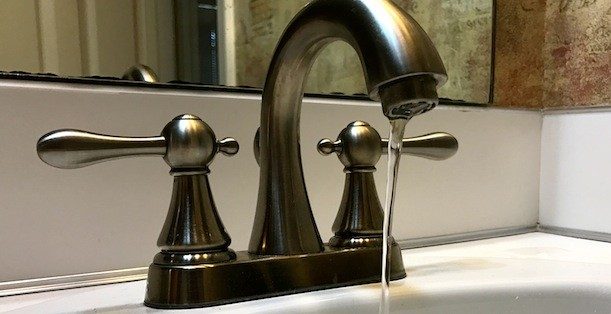Fort Smith Board approves $2.5 million for year one of water meter replacement
by February 7, 2018 6:18 pm 724 views

The Fort Smith Utilities Department will move forward with a two-year water meter replacement program following approval from the city’s Board of Directors on Tuesday night (Feb. 6).
Approximately one in four Fort Smith ratepayers could see an average increase of 21.3% to their water bills as a result, though that figure will vary widely based on meter performance.
Fort Smith Utilities Director Jerry Walters emphasized to Talk Business & Politics following an Oct. 10, 2017 study session that any bill adjustments would not be rate increases, but adjustments based on more accurate readings. He expected the largest increases to be on the city’s 9,500 meters that have exceeded 20 years in operation, some of which were not giving readings at all for the amount of water they were using.
The additional 7,300 that have outlived the recommended 10 years (19.95% of the city’s total metered population) will likely see smaller increases, but Walters acknowledged he would not know for certain whether the meter replacement schedule will result in that overall 21.3% revenue increase until he finishes measuring data throughout 2018. In total, the city services 36,589 meters. From these, roughly 16,800 have exceeded their normal life expectancy (45.91%).
Tuesday’s approvals totaling $2.547 million — $1.222 million for the purchase of water displacement type meters and $1.325 million for automated electronic read transmitters (ERTs) — marked the next stage of the citywide replacement project that will mean meter readers no longer have to walk their route and read each meter individually. Instead each meter will be read by an electronic receiver carried inside Utilities Department vehicles, thus “significantly” reducing the number of errors and re-reads, Walters said.
Zenner Performance Meters of Addison, Texas, was the winning bidder for the meters, charging between $62 and $315 per meter depending on sizes, which ranged from 5/8-inch to 2-inch. In Tuesday’s voting, the Board also approved waiving the competitive bidding process to continue working with Washington-based ITRON, Inc., who has worked with the city on its existing ERT population since it began installations in January of 2017. To date, only 15% of the city’s meters have ERTs installed.
Funding for the meters was approved with the 2018 budget, and it will come from the department’s Capital Outlay-Other Equipment account. ERT funding will come from the 2014 Sales and Use Tax bonds as well as Capital Improvement and Capital Outlay Funds. Director George Catsavis, the Board’s only dissenting vote on the expenditures, asked Walters why the two-year phase-in program couldn’t be extended to “three or four” years to reduce the potential impact of sticker shock.
“The problem is that we have so many meters that are so old,” Walters said, adding that the city did consider “spreading them out over five, seven, ten years, but we have such a bad problem … that we decided to go ahead and shorten that time period and get them changed out.”
Walters continued: “The Waterworks Association suggests that we replace them every ten years, and we have meters that have been in the ground for 30, 40 years. When we tested the meters, we found that many of those we pulled — nearly all of them, I won’t say absolutely all of them, but nearly all of them — are reading low or misreading, and a lot of them have failed.”
In October, Walters told Talk Business & Politics he expected the overall cost for the two-year phase-in to be $7 million.
